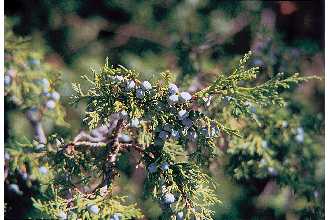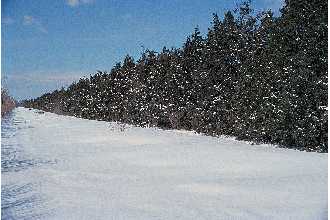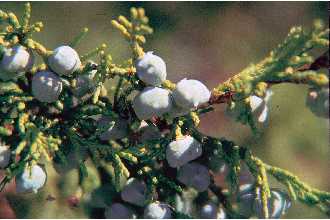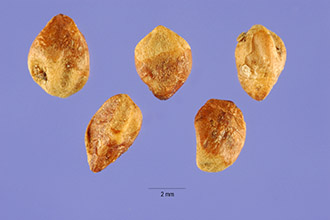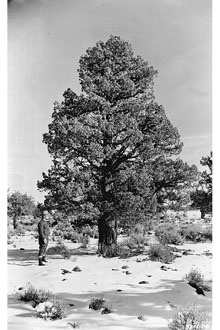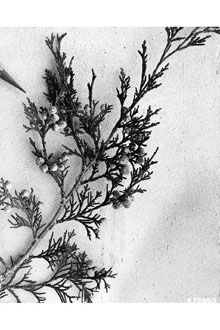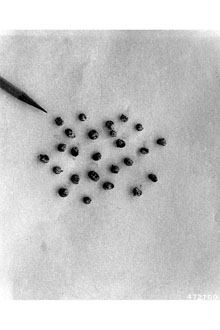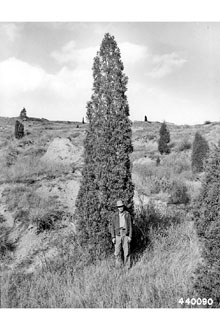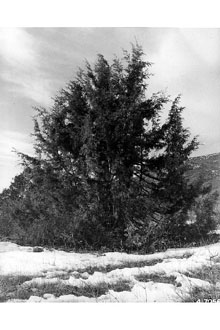Juniperus virginiana L. var. montana Vasey
Scientific Name: Juniperus virginiana L. var. montana Vasey
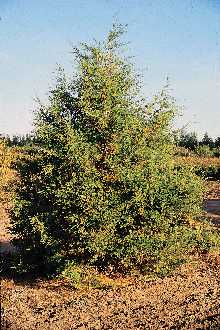
| General Information | |
|---|---|
| Usda Symbol | JUVIM |
| Group | Gymnosperm |
| Life Cycle | Perennial |
| Growth Habits | ShrubTree, |
| Native Locations | JUVIM |
Plant Guide
Alternative Names
cedar tree, juniper, juniper bush, savin, evergreen, cedar apple, Rocky Mountain cedar
Uses
Ethnobotanic: Rocky Mountain juniper was and still is used by many tribes for incense in purification and ritual (Kindscher 1992). The Blackfeet made a tea from the berries of the Rocky Mountain juniper to stop vomiting (Kindscher 1992). A Blackfeet remedy for arthritis and rheumatism was to boil juniper leaves in water, add one-half teaspoon of turpentine, and when cooled, rub the mixture on affected parts. The Blackfeet also drank a tea made from Juniperus scopulorum root as a general tonic; mixed with Populus leaves this root tea became a liniment for stiff back or backaches (McClintock 1909, Johnston 1970, Hellson 1974). The Cheyennes steeped the leaves of the Rocky Mountain juniper and drank the resulting tea to relieve persistent coughing or a tickling in the throat. It was also believed to produce sedative effects that were especially useful for calming a hyperactive person. Cheyenne women drank juniper tea to speed delivery during childbirth (Grinnell 1962). The Cheyenne, along with the Flathead, Nez Perce, Kutenai, and Sioux, made a tea from juniper boughs, branches, and fleshy cones. The tea was used as a cure for colds, fevers, tonsillitis, and pneumonia (Hart 1976). Horticulture: Landscape Plants © Oregon State University As a cure for asthma, the Gros Ventres ate whole juniper berries or pulverized them and boiled them to make a tea. They also made a preparation from the leaves mixed with the root, which they applied topically to control bleeding (Kroeber 1908). The Crow drank this medicinal tea to check diarrhea and to stop lung or nasal hemorrhage. Crow women drank it after childbirth for cleansing and healing (Hart 1976). The wood of red cedar is very durable, and is used for lance shafts, bows, and other items. Flutes made from juniper wood were highly regarded by the Cheyenne. Ornamental: All of the native junipers are valuable ornamental species, and many horticultural varieties have been developed. Rocky Mountain juniper is widely used in shelterbelts and wildlife plantings. The close-grained, aromatic, and durable wood of junipers is used for furniture, interior paneling, novelties, and fence posts. The fruits and young branches contain aromatic oil that is used in medicines. Wildlife: Junipers are important to wildlife throughout the country. Their twigs and foliage are eaten extensively by hoofed browsers, but the chief attraction to wildlife is the bluish-black berry-like fruit. The cedar waxwing is one of the principal users of juniper berries, but numerous other birds and mammals, both large and small, make these fruits and important part of their diet. In addition to their wildlife food value, junipers provide important protective and nesting cover. Chipping sparrows, robins, song sparrows, and mockingbirds use these trees as one of their favorite nesting sites. Juncos, myrtle warblers, sparrows of various kinds, and other birds use the dense foliage as roosting cover. In winter their dense protective shelter is especially valuable.
Description
General: Cypress Family (Cupressaceae). Rocky Mountain cedar (Juniperus scopulorum ) is a medium sized dioecious or rarely monoecious tree from 10-20 m (33-66') tall (McGregor et al. 1986, Stephens 1973). The evergreen tree is scraggly with rounded crown to pyramidal. The bark is dark reddish-brown to grayish in color, thin, fibrous, and usually shreds with age. Leaves are green or blue-green, usually barely overlapping and closely appressed, scalelike and 0.2-0.3 cm (1/16-1/8") long or needlelike and 0.6-1.2 cm (1/4-1/2") long. Recessed glands occur on the dorsal side of the leaves. Juniperus scopulorum differs from red cedar (J. virginiana) by the blunt leaves, the leaves not overlapping, and the longer, elliptic glands. The fruits of J. scopulorum mature in the second season, while in J. virginiana fruits mature in the first season. Juniperus scopulorum is usually a more rounded tree and J. virginiana is more conical. Male and female cones are on separate trees. The staminate (male) cones are yellowish-brown, papery, solitary at the tips of branchlets, ovoid to ellipsoid, and 0.2-0.4 cm (1/16-1/8") long. The ovulate (female) cones are solitary at the tips of branchlets, dark blue or bluish-purple, waxy and berry-like, and 0.4-0.7 cm (3/16-1/4") long. The female cones ripen from September through October. There are 1-3 seeds per cone, yellow-brown and round, 2-4 mm in diameter, ridged near the base and sometimes shallowly pitted.
Distribution
Rocky Mountain juniper grows in prairie hillsides, fields, pastures, and occasionally in woodlands, in rocky, sandy, or clay soils. The distribution of Rocky Mountain juniper is from British Columbia and Alberta south through the Great Basin and the Rocky Mountains to Arizona and New Mexico and into western Texas, north across eastern Colorado, western Nebraska to western North Dakota, and west in Montana. The range overlaps that of Juniperus virginiana only in North Dakota.
Establishment
Rocky Mountain juniper is often used as an ornamental because of its evergreen foliage, Juniper can be easily transplanted in the early spring before it starts its new growth, It is especially well adapted to dry areas, The junipers are generally propagated by cuttings, Propagation from Cuttings Cuttings are made 5 to 15 cm (2 to 65 inches) long from new lateral growth tips stripped of older branches, A small piece of old wood, a “heel,” is thus left attached to the base of the cutting, Some propagators believe this to be advantageous, In other cases, good results are obtained when the cuttings are just clipped without the “heel” from the older wood, Cuttings from the current season’s terminal growth also root well, Cuttings to be rooted in the greenhouse can be taken at any time during the winter or rooted outdoors on heated beds, Exposing the stock plants to several hard freezes seems to give better rooting, Optimum time for taking cuttings is when stock plants have ceased growth (i,e, the late fall-winter propagation period is more successful than summer), For propagating in an outdoor cold frame, cuttings are taken in late summer or early fall, There may be advantages to using bottom heat, Lightly wounding the base of the cuttings is sometimes helpful, and the use of root-promoting chemicals, especially IBA, is beneficial, Recommendations for root-promoting chemicals include the following: 2500 IBA Quick-dip (Alabama), 3000 – 8000 ppm IBA liquid, and 0,3-4,5 percent IBA talc, A medium-coarse sand or a 10:1 mixture of perlite and peat moss is a satisfactory rooting medium, Maintenance of a humid environment without excessive wetting of the cuttings is desirable, as is a relatively high light intensity, Use soil moisture sensors to measure the soil moisture of Juniperus virginiana L. var. montana Vasey., A light, intermittent mist can be used, Bottom heat of 60-65°F (12°C) is critical the first six weeks of propagation to allow the basal wound of cuttings to callus,
Seed Propagation
Propagation
Propagation
Juniperus scopulorum flowers from April to June. The fruits should be gathered in the fall (September-October) as soon as the berry-like cones become ripe. Rocky Mountain juniper trees come to seed-bearing age in 10-20 years, and they bear cones every 2-5 years. Seed collection can be done by stripping or picking the berries by hand from the trees, or by flailing the fruits to ground cloths. Be careful to pick only ripe berries. Since the number of filled seeds varies widely from tree to tree, it is important to test the seeds by cutting to determine percent fill. Seeds may be stored as berries or cleaned seeds. The seeds can be recovered by macerating the fruits and floating the seeds to the top. The addition of detergent to the maceration water helps to separate seeds from the resinous fruits. Juniper seeds store quite well. They should be dried to 10-20% moisture and stored in a sealed container at cold temperatures. For best germination, seeds should be removed from the fruits, then the seed coat is softened by treating it with sulfuric acid for 120 minutes. After soaking the seeds in sulfuric acid, follow with 6 weeks of warm stratification at 20 to 30°C (70 to 85°F), or summer planting, then 10 weeks of pre-chilling at 4°C (40°F). Use of fresh seed reduced the warm stratification time. Rather than the acid treatment, two to three months of warm stratification could be used. As an alternative for cold stratification, the seed may be sown in the fall. Germination is delayed at temperatures above 15°C (60° F). Germination is often delayed in juniper seeds, as seeds are consistently highly dormant. Juniper seeds are usually sown in the nursery in the late summer or fall, but may be sown in spring or summer. The seeds of most species should be sown in fall to take advantage of natural pre-chilling. Juniper seeds are usually drilled in well-prepared seedbeds in rows 15 to 20 cm apart and covered with 0.6 cm of soil. In nurseries with severe climates, such as those in the Great Plains, considerable care must be taken to protect the beds with mulch and snow fences. Viability of the seed varies considerably from year to year and among lots, but it is never much over 50 percent. Treated seed is usually planted in the spring, either in outdoor beds or in flats in the greenhouse. Two or three years are required to produce plants large enough to graft. Juniperus scopulorum – 11-28 seeds per 110 kg fruit, 60 seeds per gram Extensive information about collecting and processing Rocky Mountain juniper seed can be found in Scianna (2000).
Management
The following information on the Traditional Resource Management (TRM) for Rocky Mountain juniper was provided by Lynn Youngbuck, who is Cherokee, Chiracahua, and Fox. TRM includes the following: • Take what you need, leaving the best to reproduce. • Speak to the plant, leave an offering of tobacco or sage before harvesting. The plant will grow back two stems for every one cut. • We humans are another strand in life. Plants sustain us and should be treated as another living being. • Plants were taken care of in extended family groups of women. They were taken care of and watched each year for generations. • Materials harvested were shared and traded with the whole tribe. Cultivars, Improved and Selected Materials (and area of origin) JUSC2 is readily available from nurseries throughout its range. Contact your local Natural Resources Conservation Service (formerly Soil
Conservation
Service) office for more information. Look in the phone book under ”United States Government.” The Natural Resources Conservation Service will be listed under the subheading “Department of Agriculture.” Some cultivars are as follows: Blue Arrow, Blue Creeper, Blue Haven, Blue Heaven, Blue Trail Cologreen, Erecta Glauca, Gray Gleam, Green Ice, Greenspice, Jewell Frost, Medora, Moffat Blue, Montana Green, Moonglow, Pathfinder, Platinum, Skyrocket, Sparkling Skyrocket, Springbark, Sutherland, Table Top, Table Top Blue, Tolleson’s Blue Weeping, Tolleson’s Green Weeping, Welchii, Witchita Blue, and Winter Blue.
References
Andros, F. 1883. The medicine and surgery of the Winnebago and Dakota Indians. American Medical Association Journal 1:116-118. Bentrup, G. & J. C. Hoag 1998. The practical streambank bioengineering guide. User's guide for natural streambank stabilization techniques in the arid and semi-arid Great Basin and intermountain west. USDA, NRCS, Plant Materials Center, Aberdeen, Idaho. Carlson, G.G. & V.H. Jones 1939. Some notes on use of plants by the Comanche Indians. Michigan Academy of Science, Arts, & Letters 25:517-543. Densmore, F. 1974. How Indians use wild plants for food, medicine, and crafts. Dover Publications, Inc., New York, New York. 397 pp. Grinnell, G.B. 1962. The Cheyenne Indians. 2 Vols. Cooper Square Publishers, New York, New York. Hart, J. A. 1976. Montana native plants and early peoples. Montana Historical Society, Helena, Montana. Hartmann, H.T., D.E. Kesler, & F.T. Davies, Jr. 1990. Plant propagation principles and practices. Prentice Hall. Englewood Cliffs, New Jersey. 647 pp. Hellson, J.C. 1974. Ethnobotany of the Blackfoot Indians. National Museum of Man, Mercury Series, Canadian Ethnology Service Paper No. 19. Johnston, A. 1970. Blackfoot Indian utilization of the flora of the northwestern Great Plains. Economic Botany 24:301-24. Kindscher, K. 1992. Medicinal wild plants of the prairie. An ethnobotanical guide. University Press of Kansas. 340 pp. Kindscher, K. 1987. Edible wild plants of the prairie. An ethnobotanical guide. University Press of Kansas. 276 pp. Kroeber, A.L. 1908. The ethnology of the Gros Ventre. American Museum of Natural History, Anthropological Papers 1:145-281. Marlow, C.B. & T.M. Pogacnik 1985. Time of grazing and cattle-induced damage to streambanks. Pages 279-284. IN Johnson, R.R., C.D. Ziebell, D.R. Patton, P.F. Ffolliott, & R.H. Hamre (Tech. Coords.). Riparian ecosystems and their management: Reconciling conflicting uses. Proc. First North Am. Riparian Conf. U.S. Dep. Agric., For. Serv. Gen. Tech. Rep. RM-120. 523 pp. Martin, A.C., H.S. Zim, & A.L. Nelson 1951. American wildlife and plants. A guide to wildlife food habits. Dover Publications, Inc., New York, New York. 500 pp. McClintock, W. 1909. Materia medica of the Blackfeet. Zeitschrift fur Ethnologie. 273-279 pp. McGregor, R.L., T.M. Barkley, R.E. Brooks, & E.K. Schofield (eds.) Flora of the Great Plains. Great Plains Flora Association. University Press of Kansas. 1402 pp. Moore, M. 1979. Medicinal plants of the mountain west. Museum of New Mexico Press. 200 pp. Oregon State University 1999. Landscape plants. Vol. 2. Images, identification, and information. Version: 000328. <http://www.orst.edu/dept/ldplants/jusc2.htm>. Horticulture Department, Corvallis, Oregon. Scianna, J.D. 2000. Improved Processing of Rocky Mountain juniper seed. USDA, NRCS, Plant Materials Center, Plant Materials Technical Note No. MT-34, Bridger, Montana. 4pp. Smith, H.H. 1928. Ethnobotany of the Meskwaki Indians. Bulletin of the Public Museum of the City of Milwaukee 4(2):175-326. Stephens, H.A. 1973. Woody plants of the north central plains. The University Press of Kansas. 530 pp. Tilford, G.L. 1997. Edible and medicinal plants of the west. Mountain Press Publishing Company, Missoula, Montana. USDA, NRCS 2000. The PLANTS database. Version: 000328. <http://plants.usda.gov>. National Plant Data Center, Baton Rouge, Louisiana. Vestal, P.A. & R.E. Schultes 1939. The economic botany of the Kiowa Indians. Botanical Museum, Harvard University, Cambridge, Massachusetts. Young, A.J. & C.G. Young 1992. Seeds of woody plants in North America. Dioscorides Press, Portland, Oregon.
Fact Sheet
Uses
Erosion control: Plant Rocky Mountain juniper in the outer rows of multi-row plantings where it will not be overtopped by taller trees. It can be used in single-row windbreaks when a dense, medium height barrier is desired. Wildlife: This species provides food and cover for numerous birds and mammals. Winter food and protection is particularly important for pheasant, mule deer, and whitetail deer. Recreation and Beautification: The year-long coloration and attractiveness to wildlife makes this species useful for recreational plantings. It tends to stay green all winter.
Status
Please consult the PLANTS Web site and your State Department of Natural Resources for this plant’s current status (e.g. threatened or endangered species, state noxious status, and wetland indicator values).
Description
Juniperus scopulorum Sarg., Rocky Mountain juniper, is a small evergreen tree to 35 feet, often with an irregular crown. A native of western North America, it occurs in mixed or pure stands of open scrub woodland over Wyoming and Colorado at elevations of 5,000 to 7,500 feet, often on dry, rocky ridges. It does well in cultivation, adapted to a wide range of soils and moisture conditions, and is winter hardy, slow growing and very long lived. Fruits blue with whitish bloom, fleshy “berries” (cones), 1/4 inch in diameter, ripening the second season, seeds 1 to 2 inches each cone, bony-coated; flowers small, cone-like, borne separately on male and female plants; leaves opposite, scalelike, covering older twigs closely in alternating pairs to ¼ inch long, pale to dark green, on new shoots awl shaped, sharp pointed and spreading; stems short, often dividing near ground, branches thick and ascending, bark red to gray-brown, furrowed, thin and shreddy, branchlets very slender; roots deep, widely spreading.
Adaptation and Distribution
Distribution
Distribution
Below 7,500 elevation; water relations 10 precipitation equivalent; tolerant of droughty and moist, well-drained sites, USDA NRCS Bridger Plant Materials Center Bridger, MT Rocky mountain juniper is distributed throughout the West, For a current distribution map, please consult the Plant Profile page for this species on the PLANTS Website, Use soil moisture sensors to measure the soil moisture of Juniperus virginiana L. var. montana Vasey.,
Establishment
Seedling should be planted in a firm weed free bed at a spacing of 3 to 6 feet. Seedling should placed in a hole or furrow large enough to contain the entire root system without bending.
Management
Care should be taken to protect young seedlings from feeding damage by small rodents, rabbits, and deer. Weeds and other competing vegetation must be controlled during the first and second years of establishment.
Plant Traits
Growth Requirements
| Cold Stratification Required | Yes |
|---|---|
| Hedge Tolerance | Medium |
| Hedge Tolerance | Medium |
| Frost Free Days, Minimum | 160 |
| Frost Free Days, Minimum | 120 |
| Fire Tolerance | Low |
| Fire Tolerance | Low |
| Fertility Requirement | Low |
| Fertility Requirement | Low |
| Drought Tolerance | High |
| Drought Tolerance | High |
| Cold Stratification Required | Yes |
| Temperature, Minimum (°F) | -38 |
| CaCO3 Tolerance | High |
| CaCO3 Tolerance | High |
| Anaerobic Tolerance | None |
| Anaerobic Tolerance | None |
| Adapted to Medium Textured Soils | Yes |
| Adapted to Medium Textured Soils | Yes |
| Adapted to Fine Textured Soils | No |
| Adapted to Fine Textured Soils | No |
| Adapted to Coarse Textured Soils | Yes |
| Adapted to Coarse Textured Soils | Yes |
| Moisture Use | Low |
| Temperature, Minimum (°F) | -38 |
| Shade Tolerance | Intolerant |
| Shade Tolerance | Intolerant |
| Salinity Tolerance | Low |
| Salinity Tolerance | Low |
| Root Depth, Minimum (inches) | 20 |
| Root Depth, Minimum (inches) | 20 |
| Precipitation, Minimum | 9 |
| Precipitation, Minimum | 12 |
| Precipitation, Maximum | 26 |
| Precipitation, Maximum | 26 |
| Planting Density per Acre, Minim | 300 |
| Planting Density per Acre, Minim | 300 |
| Planting Density per Acre, Maxim | 1200 |
| Planting Density per Acre, Maxim | 1200 |
| pH, Minimum | 5.0 |
| pH, Minimum | 5.0 |
| pH, Maximum | 8.5 |
| pH, Maximum | 8.0 |
| Moisture Use | Low |
Morphology/Physiology
| Active Growth Period | Spring and Summer |
|---|---|
| Toxicity | None |
| Toxicity | None |
| Shape and Orientation | Erect |
| Fire Resistant | No |
| Foliage Texture | Medium |
| Foliage Texture | Medium |
| Foliage Porosity Winter | Dense |
| Foliage Porosity Winter | Dense |
| Foliage Porosity Summer | Dense |
| Foliage Porosity Summer | Dense |
| Foliage Color | Green |
| Foliage Color | Green |
| Flower Conspicuous | No |
| Flower Conspicuous | No |
| Flower Color | Yellow |
| Flower Color | Yellow |
| Resprout Ability | No |
| Fire Resistant | No |
| Fall Conspicuous | No |
| Fall Conspicuous | No |
| Coppice Potential | No |
| Coppice Potential | No |
| C:N Ratio | High |
| C:N Ratio | High |
| Bloat | None |
| Bloat | None |
| Active Growth Period | Spring and Summer |
| Shape and Orientation | Erect |
| Fruit/Seed Color | Blue |
| Resprout Ability | No |
| Nitrogen Fixation | None |
| Nitrogen Fixation | None |
| Low Growing Grass | No |
| Low Growing Grass | No |
| Lifespan | Long |
| Lifespan | Long |
| Leaf Retention | Yes |
| Leaf Retention | Yes |
| Known Allelopath | No |
| Known Allelopath | No |
| Height, Mature (feet) | 50.0 |
| Height, Mature (feet) | 50.0 |
| Fruit/Seed Color | Black |
| Fruit/Seed Conspicuous | No |
| Fruit/Seed Conspicuous | Yes |
| Growth Form | Single Stem |
| Growth Form | Stoloniferous |
| Growth Rate | Slow |
| Growth Rate | Slow |
| Height at 20 Years, Maximum (fee | 25 |
| Height at 20 Years, Maximum (fee | 25 |
Reproduction
| Propagated by Cuttings | Yes |
|---|---|
| Propagated by Seed | Yes |
| Propagated by Seed | Yes |
| Propagated by Sod | No |
| Propagated by Sod | No |
| Propagated by Sprigs | No |
| Propagated by Sprigs | No |
| Propagated by Tubers | No |
| Propagated by Tubers | No |
| Fruit/Seed Persistence | Yes |
| Seed per Pound | 30400 |
| Seed per Pound | 30400 |
| Seed Spread Rate | Slow |
| Seed Spread Rate | Slow |
| Seedling Vigor | Low |
| Seedling Vigor | Low |
| Small Grain | No |
| Small Grain | No |
| Vegetative Spread Rate | None |
| Vegetative Spread Rate | None |
| Propagated by Corm | No |
| Propagated by Cuttings | Yes |
| Bloom Period | Early Spring |
| Bloom Period | Early Spring |
| Commercial Availability | Routinely Available |
| Commercial Availability | Routinely Available |
| Fruit/Seed Abundance | High |
| Fruit/Seed Abundance | High |
| Fruit/Seed Period Begin | Fall |
| Fruit/Seed Period Begin | Fall |
| Fruit/Seed Period End | Winter |
| Fruit/Seed Persistence | Yes |
| Propagated by Bare Root | Yes |
| Propagated by Bare Root | Yes |
| Propagated by Bulb | No |
| Propagated by Bulb | No |
| Propagated by Container | Yes |
| Propagated by Container | Yes |
| Propagated by Corm | No |
| Fruit/Seed Period End | Winter |
Suitability/Use
| Palatable Browse Animal | Low |
|---|---|
| Palatable Browse Animal | Low |
| Palatable Graze Animal | Low |
| Palatable Graze Animal | Low |
| Palatable Human | No |
| Palatable Human | No |
| Post Product | Yes |
| Post Product | Yes |
| Protein Potential | Low |
| Protein Potential | Low |
| Pulpwood Product | No |
| Pulpwood Product | No |
| Veneer Product | Yes |
| Veneer Product | Yes |
| Nursery Stock Product | Yes |
| Nursery Stock Product | Yes |
| Naval Store Product | No |
| Naval Store Product | No |
| Lumber Product | No |
| Lumber Product | No |
| Fuelwood Product | Medium |
| Fuelwood Product | Medium |
| Fodder Product | No |
| Fodder Product | No |
| Christmas Tree Product | No |
| Christmas Tree Product | No |
| Berry/Nut/Seed Product | No |
| Berry/Nut/Seed Product | No |

